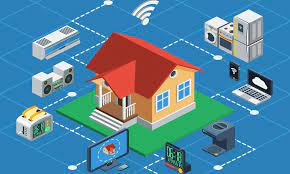Older adults can save tens of thousands of dollars annually by choosing assisted living communities over aging in place in their homes.
Unlike point solutions, Inspiren unifies resident safety, care planning, staffing, and emergency response into a single AI-powered platform.
An artificial intelligence-powered virtual assistant platform for senior living and care providers.

 Within five years, predictive, proactive and adaptive smart home solutions that support health and wellbeing, comfort and safety, and engagement and entertainment will emerge to meet the needs of older adults, including subscription-based services that are integrated with wearables. Remote configuration and updates will be standard, and health insurers will be interested in smart home technology as a deterrent to hospitalization. With the addition of predictive analytics and machine learning, the home can become a participating caregiver for the oldest and frailest. What are a few of the trends that will make that feasible?
Within five years, predictive, proactive and adaptive smart home solutions that support health and wellbeing, comfort and safety, and engagement and entertainment will emerge to meet the needs of older adults, including subscription-based services that are integrated with wearables. Remote configuration and updates will be standard, and health insurers will be interested in smart home technology as a deterrent to hospitalization. With the addition of predictive analytics and machine learning, the home can become a participating caregiver for the oldest and frailest. What are a few of the trends that will make that feasible?
Comments
From Michael Novak via LinkedIn
Thank you for sharing this. Prescient and valuable for updating end of year strategies.
From Mary Furlong -- Founder of the Longevity Summit
This superb overview of the Future of the Smart Home is a must read for investors, entrepreneurs and corporate and non profit leaders in healthcare, homecare, industry. The synthesis of industry perspectives will help you to chart a plan, an investment thesis around the future of well being, engagement and safety for the longevity marketplace.
From Jon Warner via LinkedIn
One of the big problems highlighted by this report is that we have a vast array of products already in the market and we are in danger of overwhelming people with choice. Once again, much better #customerdiscovery and #designthinking, not to mention clearer education and messaging is crucial!
From Jon Warner via LinkedIn
Of course, we will see a huge increase in sensors, cameras, and voice interactions in the home in the next few years -the question for me is how well integrated will it be as well as safe, private, accessible and user-friendly for #olderadults and their #caregivers! #healthequity #digitaldivide
For Jon Warner via LinkedIn
This is a report that is well worth reading for any #entrepreneurs or #startups (not to mention more established firms) that are interested in #seniors and the 50+ population and its needs
From Nancy Griffin via LinkedIn
Laurie Orlov is truly the Oracle of AgeTech! Smart home technology's migration from the one-off, DIY process to fully integrated systems is a gamechanger. These solutions will improve the quality of life for seniors at all income levels and open up choices for at home and senior living.
From Jane Sarasohn-Kahn via LinkedIn
Want to know the latest read on the future of #smarthomes and older adults?
Laurie Orlov asks and answers the questions we all need to understand as we conceive, develop, market and serve older people keen to age well in their homes as long as physically and fiscally possible.
Here is your go-to report outlining the key opportunities, challenges, and color commentary from key experts in the field.
Thank you, Laurie, for another insightful and pragmatic report I'll be using in the New Year...
From Elizabeth Parks via LInkedIn
So much here to talk about and work on - our latest research shows 22% of all broadband households are caregivers - that market alone is going to need new innovation and technologies to really be able to accomplish the health at home ideas that are really taking off. no doubt its worth it too - with lots of studies saying that people just do better off in their own home environment. some of our research is noted in Laurie's great report.